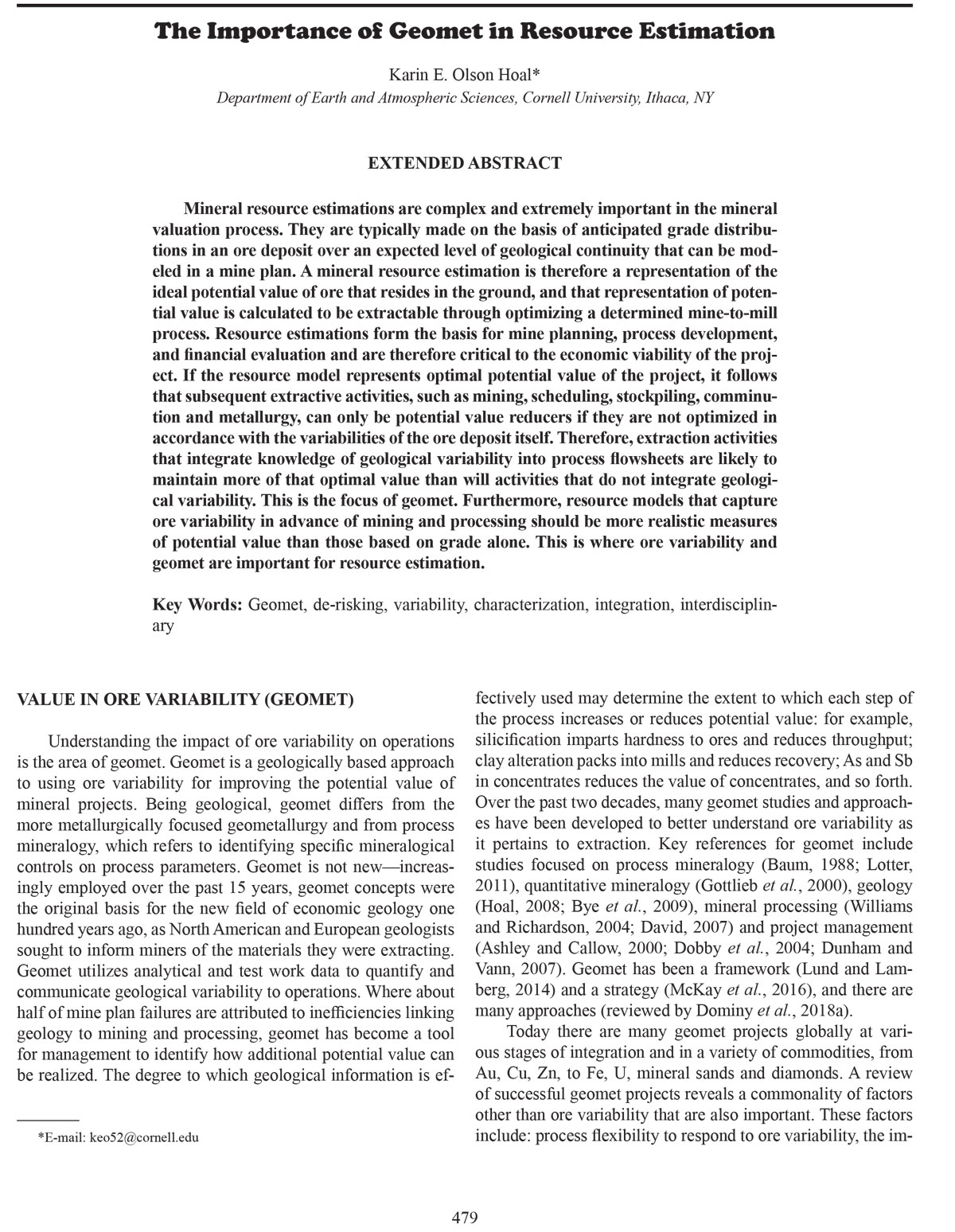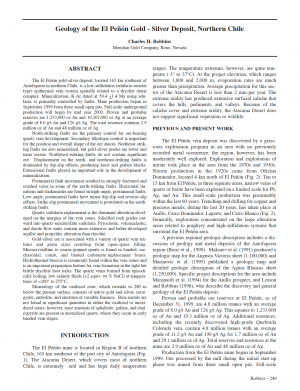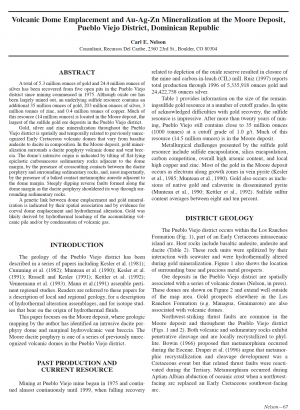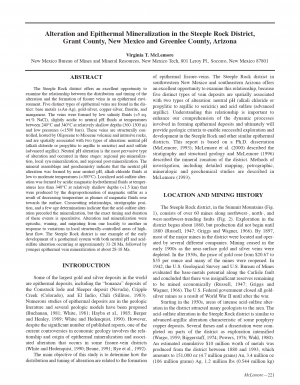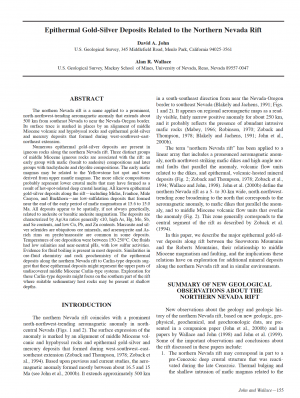Description
Mineral resource estimations are complex and extremely important in the mineral
valuation process. They are typically made on the basis of anticipated grade distributions in an ore deposit over an expected level of geological continuity that can be modeled in a mine plan. A mineral resource estimation is therefore a representation of the
ideal potential value of ore that resides in the ground, and that representation of potential value is calculated to be extractable through optimizing a determined mine-to-mill
process. Resource estimations form the basis for mine planning, process development,
and financial evaluation and are therefore critical to the economic viability of the project. If the resource model represents optimal potential value of the project, it follows
that subsequent extractive activities, such as mining, scheduling, stockpiling, comminution and metallurgy, can only be potential value reducers if they are not optimized in
accordance with the variabilities of the ore deposit itself. Therefore, extraction activities
that integrate knowledge of geological variability into process flowsheets are likely to
maintain more of that optimal value than will activities that do not integrate geological variability. This is the focus of geomet. Furthermore, resource models that capture
ore variability in advance of mining and processing should be more realistic measures
of potential value than those based on grade alone. This is where ore variability and
geomet are important for resource estimation.

